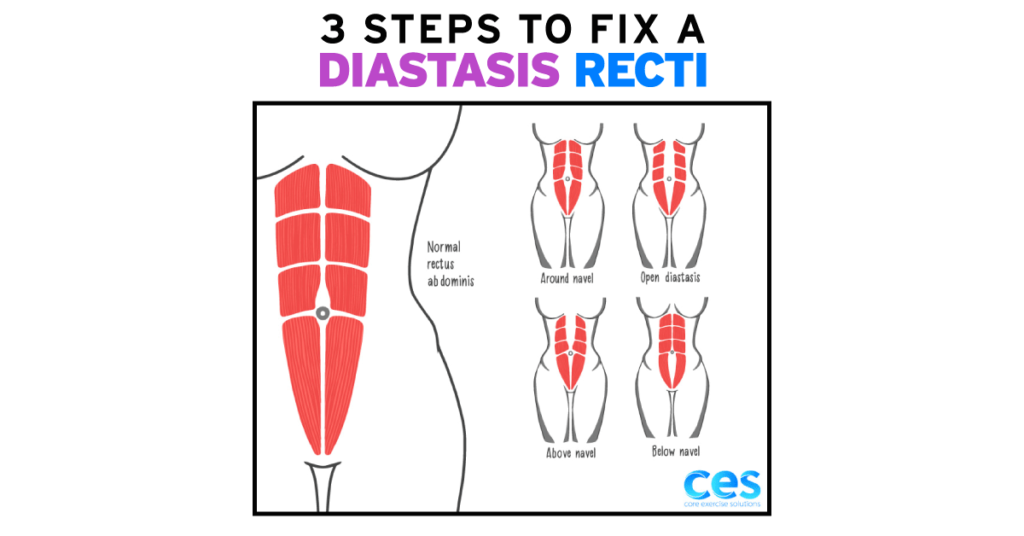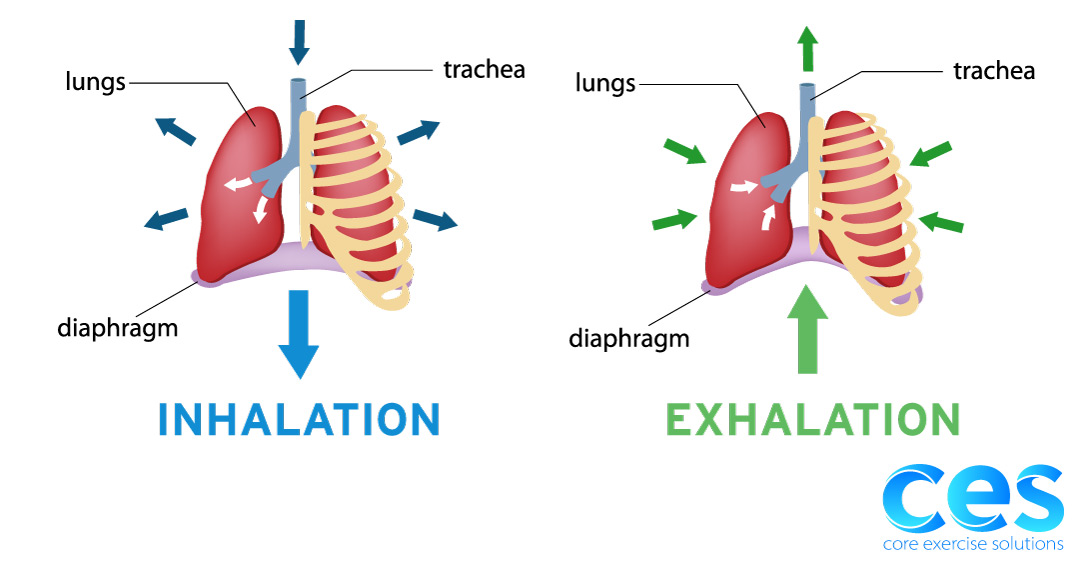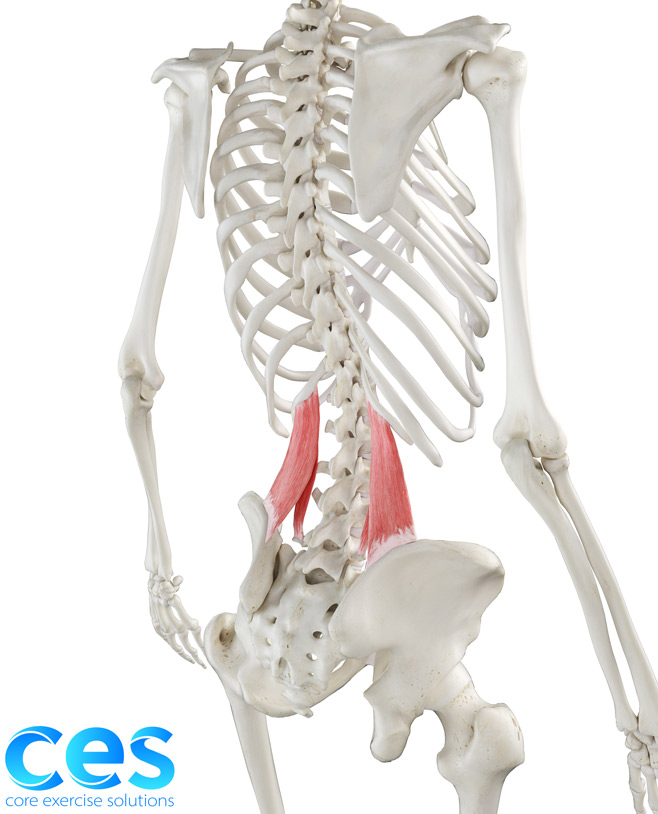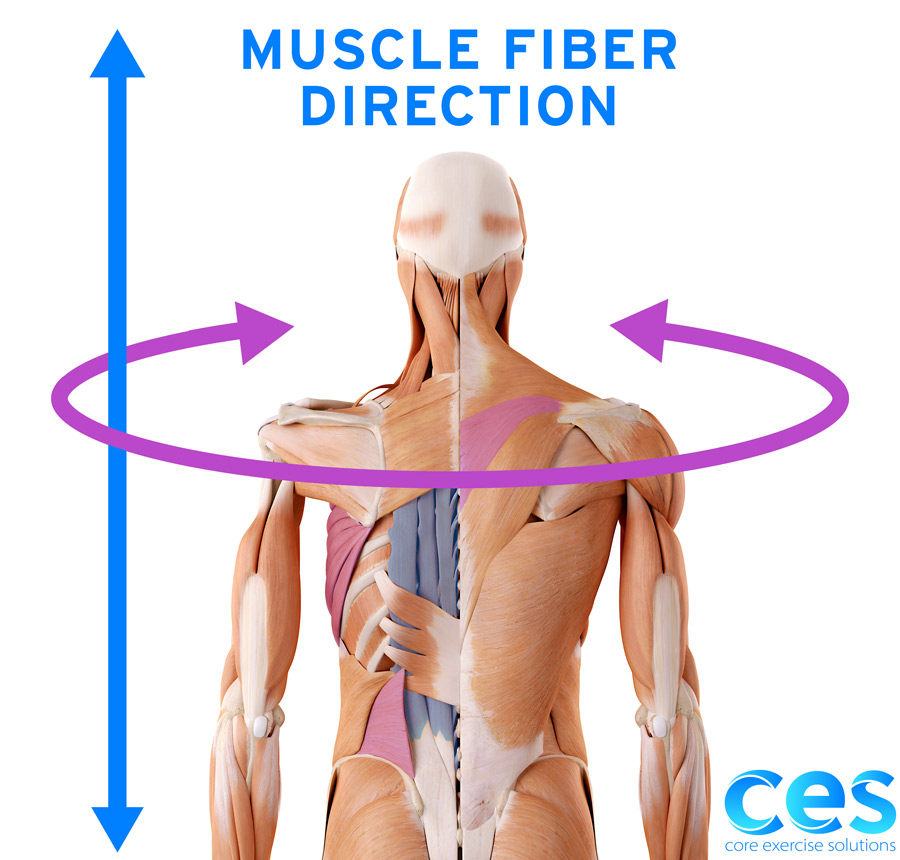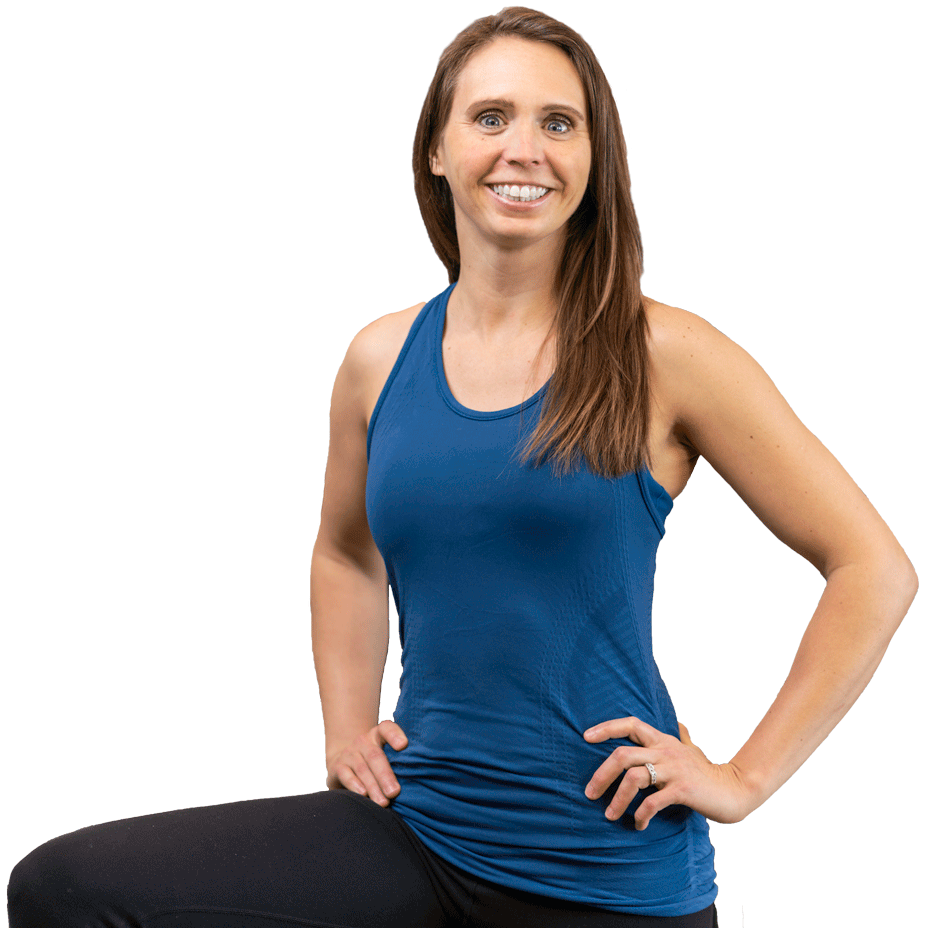I love helping women improve their diastasis recti!
For a percentage of women, this is as simple as properly activating the core muscles, and it heals right up postpartum. Some women don’t even realize they had one! (Much like low level prolapse.)
But for another percentage of women, improving a diastasis will take a lot more work. In this article, I’d like to throw out a few additional ideas beyond the common advice of doing a small crunch while scrunching your abs together in the front. I see a diastasis as a midline issue that connects the entire body. By tapping into the entire body to help improve it, we get better results!
#1. Focus on breathing
Focus on breathing. Breathing dictates how your core naturally responds. The better the natural response you have, the better chance you have of healing a diastasis. At first glance, breathing seems like it would be easy — you do it all day long, right? But it’s a bit more challenging than that, especially if you’ve recently gone through a pregnancy.
The growing baby pushes up on the diaphragm and out on the ribs, which means most women come out of pregnancy with an altered breathing pattern. Most women have to re-learn how to breathe correctly during the postpartum period.
Use your abdominals to breathe
Part of correct breathing is having the abdominals as an anchor for the ribcage. Without using the abdominals, it can be very challenging to breathe correctly. So, can you see how a diastasis can perpetuate a poor breathing pattern which can perpetuate a diastasis due to a lack of abdominal strength? Frustrating, right? Women often need very focused, specific breathing work to break that cycle, which goes beyond general deep breathing.
Stop shallow breathing
The first step in improving breathing is to get out of a shallow breathing pattern. Shallow breathing is when the air and pressure goes up into your neck and shoulders, so one clue that you have a tendency toward a shallow breathing pattern is tightness in your chest, neck and shoulders. When you shallow breathe, accessory breathing muscles have to work harder which creates the subsequent neck and shoulder tightness.
I especially love working with runners, and getting back the report after we work on breathing that they were able to run faster with less neck and shoulder tightness!
Great breathing has so many beneficial carryovers, including stress reduction! In normal life, those accessory breathing muscles are used ONLY when we need to do an all-out sprint or effort. Your respiratory system is on high demand, and lots of adrenaline and cortisol is usually involved. It’s normal to use the accessory breathing system when you have to sprint across the yard to help a hurt kid, but it’s not normal to use it for all-day, relaxed breathing.
Stressor or high demand = Accessory Breathing
Stress has dissipated = Breathing demand decreases, and the accessory system can stay relaxed (i.e. no tension in your chest, neck or shoulders for regular daily breathing)
Now, think about what an all-day shallow breathing pattern is doing to your autonomic nervous system. I hope some things are starting to click on why deep breathing is so important, and how we can decrease our stress levels simply by working on our breathing!
Deep breathing and diastasis
Ok, back to a diastasis. You know that deep breathing is great for everything, but how do you deep breathe without all the air going into your belly?
Think about it this way… a diastasis is a “give” in the front fascial system. That fascia needs just the right amount of stimulus to heal. Too much, and you strain it more. Too little, and it doesn’t know to remodel and heal. Why would the body work hard to heal something that’s not being used? (Just something to ponder when it comes to corset use.)
Is belly breathing deep breathing?
Yes, belly breathing is deep breathing — but it’s not great for healing your diastasis. Belly breathing is usually too much stress or expansion on the midline fascia to be a healthy load.
That’s why we need to get really specific with HOW you’re working on deep breathing. A great deep breathing pattern involves not just front diaphragm expansion, but sides and back as well. The diaphragm is a dome-shaped muscle that needs to expand all around.
Getting side expansion also helps to improve the length-tension relationship of your lateral abdominals, which is a HUGE win for diastasis healing! That great 360 expansion will help to lengthen the lateral abdominals.
Think about trying to throw a ball. To really get some force (i.e. great muscle contractions), you need to wind up before throwing. You must lengthen before contracting.
And that’s what great side expansion gives you! That length before contracting really improves transverse abdominal function, and thus helps improve your diastasis healing.
#2. Move through your midline for everyday activities
Once you’re on your way toward improved breathing, the next stop is moving through your midline for everyday activities. This is where exercise should help carry over into life, because this is how we truly reinforce the patterns that help fascia remodel.
Moving through the midline of the abdominals to do daily tasks helps to connect and reinforce that fascial healing to improve a diastasis, but many diastasis-focused abdominal exercises do not emphasize this important step. So, if you’ve been working on your abs and you’re not seeing results, this could be the issue.
How is back tightness related to diastasis?
We talked about how tightness in the chest, neck and shoulders is a sign of shallow breathing. Well, back tightness is a sign that you may not be utilizing your abdominals in day-to-day life.
The quadratus lumborum (QL) will often tighten due to a lack of lateral abdominal use.
I often see that women who have a diastasis and belly pooch that just won’t go away move very stiffly through their day, utilizing a lot of QL activation instead of lateral abdominals. I love watching how people walk in the room, set down their purse, and turn to close a door or reach for a clipboard. These things can sometimes tell me more than the exercises they are doing.
When you only go through the motions of your exercises and don’t understand the purpose or how they are supposed to carry over, it can change the emphasis the exercise has, and what you’re actually working while doing it.
One example of this is side planks. Do you feel side planks more in your lateral abdominals or your low back? Think about the goal of this exercise. It’s to work your abs, right? So if you don’t feel it in your abs, you’re simply reinforcing the use of your back to do the work. That definitely won’t help diastasis healing!
Add rotations to isometric exercises
Adding little movements to an isometric exercise that mimic movement in everyday life can really help. I love adding small rotations into a side plank that mimic reaching for something. Then, I have the person picture this the next time they unload the dishwasher and reach through with their abs to put the dishes on the shelf. Now, unloading the dishwasher just became something that promotes further diastasis healing instead of something that tightens up their back and further hinders healing.
This approach to exercise takes a bit more mental effort, but the results are significantly better, so I think it’s worth exploring.
Try This Free Diastasis Recti Educational Series
Dr. Sarah Duvall, PT, DPT, CPT, and the CES Team have helped thousands of women create the strength and stability needed to overcome diastasis recti and build core strength.
Join us today for this 4-part Diastasis Recti Video Series, absolutely free.
We don't spam or give your information to any third parties. View our Terms of Use and Privacy Policy.
#3. Improve posture awareness
That leads us into posture and supporting muscular systems in the body. When you improve awareness, you improve the daily strain on your midline abdominal fascia. This means that when you stand, you connect through your abs instead of hanging forward in your hips — and you make everything an abdominal exercise, including closing the car door. Think about what a joy life will be when every task further strengthens your abs instead of tightening your back!
No, back pain and tightness is not a normal product of getting older. You do not have to live with it!
Moving further into this idea of the different parts of our body working together to help a diastasis heal is a very cool concept!
Traps and glutes are important for correct posture
There are lots of areas that you might need to focus on, but two important ones that I want to mention here are middle and lower traps, and glutes.
Wow, do these two areas have a big impact on midline healing! Hand-in-hand with middle and lower traps, the serratus also plays a big role in our efforts to connect through the middle.
Women tend to lack upper body strength. Or, more specifically, the important back strength I’m talking about here. The most common upper body muscles to work at the gym are biceps, triceps and delts. Those are the ones we can see in the mirror.
But when you need to pick up a kid and place them on a changing table or in a car seat, you need midback strength! If not, the QL and paraspinals will take over to do the work. Think about how we just talked about the QL being in opposition to diastasis healing. Well, the paraspinals (back muscles that run up and down either side of the spine) can have the same hindering effects.
Think of it as directions of motion. The middle traps run sideways, and the back muscles run up and down. We need more “wrapping” strength in the torso, which includes serratus, middle traps and transverse abdominals.
My goal with writing this article was to help you think a little differently about how diastasis healing can be a whole body effort, and how many things can play into whether or not you see improvements.
Now, we’ve talked through some outside forces, but the abdominal muscles themselves need to be balanced to change the different degrees and level of tension placed on the midline. I’ll save those thoughts for a Part 2!
If you’d like to continue learning, please join me for a free 6 Part Course looking at the core and pelvic floor. We’ll dive deeper into breathing and abdominals, including some great exercises to help heal a diastasis recti!
Pelvic Floor and Diastasis: What You Need to Know About Pressure Management
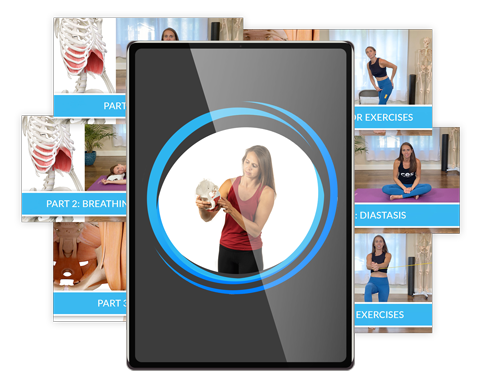
Join us today for this 6-part Pelvic Floor and Diastasis Video Series, absolutely free.
This course is designed for health/wellness professionals, but we encourage anyone interested in learning more about the pelvic floor and diastasis to sign up.
We don't spam or give your information to any third parties. View our Terms of Use and Privacy Policy.

